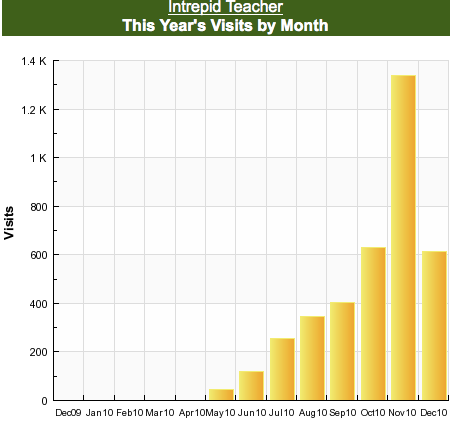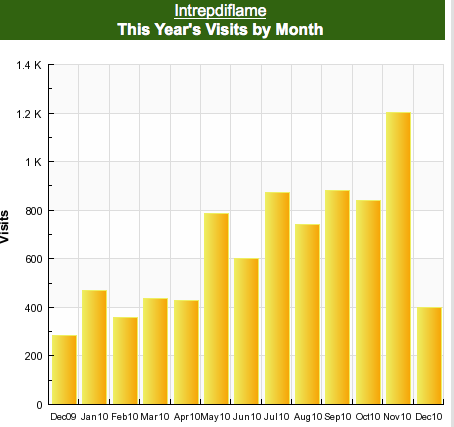It’s hard to believe the chatter about #beyondlaptops continues. For those of you involved in the conversations, you know how intense and hopefully fruitful it has all been. I hope that, like me, you have been challenged and pushed and forced to think, defend and articulate your ideas. More importantly, however, I hope we can agree it is time to move on. Time to look at the now what. Or like Adrienne said,
Sitting and talking and planning and sharing is great, but what comes next?
I have been hoping to clarify some of my ideas all week, and so here I am to do it. Before I begin, I have three disclaimers:
- This post and the ideas it is proposing is not meant to be a debate about the merits of said idea. If you feel that what I am about to propose would not be useful for your school, then please simply ignore it. I see no need to re-hash this conversation. If however, you would like to get involved and help shape what it can become, then by all means please push, pull, criticize and help make it what we all want/need it to be.
- I am moving to a new school and my role as educational technologist and decision maker will be greatly diminished. I am not even sure that I will be able to implement any of the ideas I am about to propose. I have yet to speak to my new team. (New team: if you are reading this, please don’t feel the need to comment now, just use this idea as a starting point for conversations next year.) I have a very faint idea of what is on the ground at my new school. I could show up and realize that nothing I am about to say is relevant or even possible. Having said that, I’ve never found relevancy or possibility important enough obstacles to impede the dreaming and brainstorming stage.
- Most of what I am proposing is for international schools in Asia, I hope that others will benefit from our conversations, but in order for it to work, we really need to have a small group of schools from similar backgrounds and working with the same sort of students. Perhaps this idea will be useful in a framework that mirrors your own and you can follow the process.
Okay, enough stalling. Let’s get to it.
I am proposing an Alliance–an agreement or friendship between two or more parties, made in order to advance common goals and to secure common interests. I am hoping we can create a confederation of international schools in Asia to share ideas, create shared resources and develop a broad understanding of what it means to use technology in existing 1:1 environments. These ideas, resources and understandings will be co-created and shared under an umbrella for all members to use, adapt or modify for their own individual schools.
Nuts and Bolts:
What can this look like? Where would it happen? Kim has suggest that we make the Beyond Laptops blog collaborative. I think this is a great idea and fine starting point, but I was thinking a bit more in terms of wider use of tools under the “Brand” of whatever we call this thing. (Thanks to Kim for offering the blog, but because of the sensitive nature of previous conversations, I am not presuming to use the #beyondlaptops tag) I would love to keep going with #beyondlaptops or #waybeyondlaptops, which has risen to the top of the dialogue, but the name is unimportant right now, what is important that there is a name to our alliance and our work is tagged and curated accordingly.
Perhaps we have:
- A shared Google collection where a variety of (group created) documents, that are in progress, can be shared and stored.
- A Google site or Wiki to keep track of completed documents, presentations, and other useful resources
- A blog, like Kim suggested, for reflection on the process and discussion
Let’s stop for an example:
Many of the people I regularly speak to are blogging at their schools. Some are using blogs as ePortflios, some are using them to help build community, others to create authentic audiences for their young writers. Different schools use blogs for different reasons, but there is a core understanding that blogs– should do something. We have a shared understanding of what a “good” blog should include. I am suggesting that rather than individually create these understandings, scope and sequences and rubrics of an effective blog, we create them under the banner of this alliance.
We have causally done this sort of collaboration, in the past, with disparate Google Docs, (remember the Blog Alliance) but why not have a K-12 blogging scope and sequence, complete with permission slips, rubrics, expectations etc… in a shared collection, on a wiki or a site for all of us to use. We create it together. Set up action plans and timelines. Delegate responsibilities and timelines and build it. These resources need not be one-size-fits-all. If an adjustment needs to be made for an individual school, then so be it.
The blog is just one example. I am sure we can brainstorm several other common goals and interests, that would be fertile ground for collaboration. We share many common goals and interests, and by sharing what they are, we can help each other create something, someplace, useful. Some other ideas:
- Digital Citizenship materials*
- Professional Development materials
- Community building and Cultural materials
* materials can include: documentation, posters, scope and sequence, standards, criteria, letters, rubrics, media, presentations etc…
As I mentioned earlier, I am not even sure if I can be involved with something like this at my new school. I need to get on the ground and get a lay for the land, but I have had too many casual conversations about something just like this at every conference I have ever attend. I think there are a core group of schools that could benefit from an alliance.
If you are interested, please leave a comment on this post or email me directly. I will compile a list of people who are interested and get back to you next year. Perhaps Learning 2.012 will be a good time and place to sit and layout a framework. We can consider Brady’s model or work out a different one. Maybe this is still too vague for you and you will wait till something more substantial is in place. Fair enough. Just, think about it over the summer, and let’s regroup next fall. Maybe you simply feel this is not for you or your school. Fair enough. This is my pitch, if you are interested, please get in touch.



 image by
image by  image by
image by